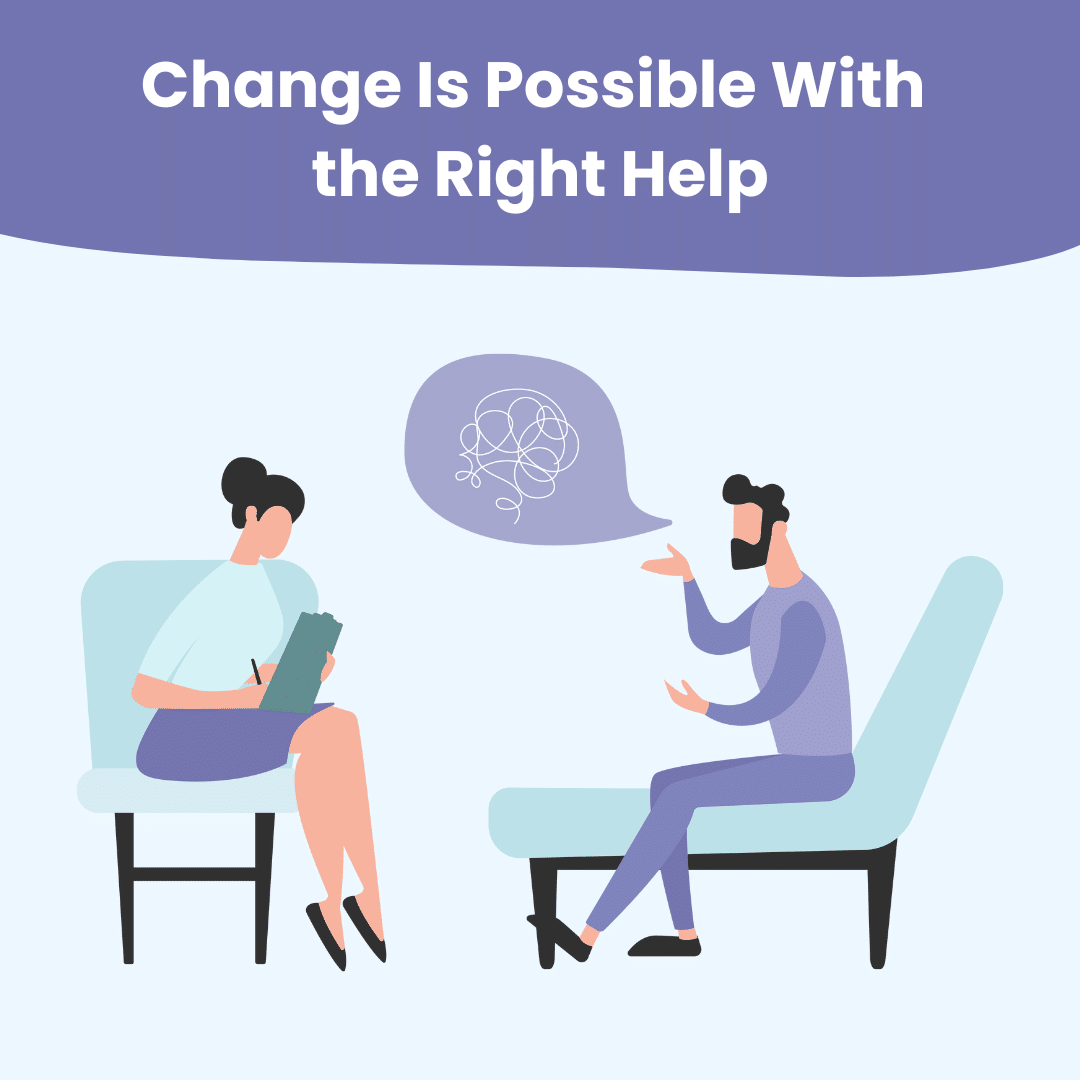
- Updated on 2 July 2024
“Why do I feel sad for no reason?” is a question many of us ask ourselves from time to time. We commonly experience fluctuations in our emotional states during our day-to-day lives. Given that sadness is one of the universal emotions that every individual experiences (Ekman, 1992), it is natural to feel sad when we face difficult circumstances or losses in our personal lives. However, it can be perplexing when we are unable to attribute our sadness to any event.
What are some underlying explanations for why we feel sad for no reason? How can we cope with this? Do we need to seek help? This article seeks to answer some of these questions.
Sadness vs Depression: What's the Difference?
Having seen mental illnesses frequently mentioned in mainstream media, you may be wondering “Am I sad or depressed?” When we think about feeling unexplained sadness, depression is a common mental health issue that comes to mind.
It is important to distinguish, however, between bouts of sadness and long-term mental health conditions, such as depression. An awareness of the difference between sadness and depression allows us to better assess the type of professional support that would be beneficial for us.
Depression is characterised by persistent feelings of sadness, feelings of worthlessness, and a loss of interest in daily activities (American Psychiatric Association, 2016). It is a debilitating condition that interferes with an individual’s daily functioning. In contrast, feelings of sadness tend to be short-term in nature, and are not accompanied by other depressive symptoms (see below).
Symptoms of Depression
Some possible symptoms of depression include (Ahmed, 2021; American Psychiatric Association, 2016):
- Depressed mood for most of the day (ie persistent feelings of sadness and emptiness)
- Loss of interest in activities / hobbies that one usually finds pleasurable
- Insomnia or sleeping excessively
- Difficulty focusing in daily life
- Significant unintended weight loss or weight gain
- Feeling worthless or guilty
- Easily irritable
- Slowing down of physical and emotional reactions, or frequent fidgeting and movement for no reason (ie restlessness)
- Persistent thoughts of self-harm or suicide
- Persistent fatigue
- Frequent crying / tearing
For depression to be diagnosed, a number of these symptoms must present together and cause significant distress or difficulties in a person’s social life, occupation and other areas of daily life. They also cannot be attributed to another medical condition or be a result of drug use.
If several of the symptoms listed above resonate with you, or you see a loved one struggling with them, know that you are not alone and that something can be done about it. You or your loved one might need to reach out and seek professional help.
It is also important to note that resonating with these symptoms may not necessarily indicate depression. You or your loved one will benefit greatly from getting a mental health diagnosis and psychological support. After receiving a diagnosis, a trained professional will be able to guide you or your loved one to explore appropriate treatments to help alleviate the distress.
What Can Trigger Sadness?
Now that you know much more about the difference between sadness and depression, you may be wondering, what are some triggers for feelings of sadness?
Stress
Sometimes, when you feel sad for no reason, you may actually be experiencing stress. When we have been put under stress for a prolonged period of time, we are inclined to detach from our emotions as a coping mechanism (Weilenmann et al., 2018). Overtime, without conscious processing, these emotions may surface as unexplained sadness.
In addition, when we go through major transitions in life, we can sometimes feel low as well. Significant life changes include switching jobs, moving houses, changing schools, or going through changes in important relationships (e.g., marriage, separation, loss). While going through the momentum of life, it can sometimes be difficult to see how the circumstances around us may be impacting our emotional states.
It is thus important for us to recognise that our emotions are valid, and can be completely natural reactions to difficult situations. We can afford to be more compassionate with ourselves.
Physical Wellbeing
Besides stress, our physical wellbeing also affects our emotions. In some cases, low moods can be a sign of inadequate sleep (Triantafillou, Saeb, Lattie, Mohr & Kording, 2019). While meeting the demands of a fast paced society, we often neglect our quality of rest. However, sufficient sleep and rest is important to keep our physical bodies healthy and regulating our emotional states.
Feeling sad can also be associated with inadequate nutrition. Commonly, this includes vitamin B and D deficiencies (Yang et. al., 2020). There can be many reasons why we may lack these vitamins, such as having an insufficient dietary intake or specific lifestyle choices.
Hence, the next time you find yourself wondering why you feel sad for no reason, consider reevaluating your lifestyle and habits. If you believe your feelings of sadness are due to a nutritional issue, do seek advice from a doctor for further assessment and treatment.
Hormonal Changes
Significant hormonal changes can also elicit feelings of sadness. During puberty, as adolescents undergo maturation, they are likely to experience feelings of sadness through the process (Bailen, Green & Thompson, 2018).
For females, low moods can sometimes be associated with the menstrual cycle. Women with premenstrual syndrome can experience low moods from between 2 weeks to days before their periods (Yonkers, O’Brien & Erikkson, 2008).
If you find that there is a link between feeling sad and when your period begins, you may want to seek an assessment from a doctor and advice on potential treatment.

How Can We Cope With Unexplained Feelings of Sadness?
Even when we feel sad for no reason, or are unable to determine the source of our sadness, it is important to not dismiss our feelings or invalidate them. Remember that feeling sad is part and parcel of life, and you are not alone in feeling this way.
You can still seek out coping methods that you know work best for you or even try new ones. This can be engaging in the different self-care techniques – physical, psychological, emotional, spiritual, personal or professional (Teo, 2019), or seeking support from a therapist.
Physical
Physical self-care involves taking care of our physical wellbeing and engaging in physical activities that we derive comfort and joy from. This can include exercising, dancing, singing and even taking a nap.
Psychological
Psychological self-care involves caring for our psychological wellbeing. Some examples include making time for self-reflection, journaling and painting.
Emotional
Emotional self-care comprises activities that allow us to consciously engage with our emotions. This can include allowing yourself to cry, watching a comedy, engaging in self-affirmations.
Spiritual
Spiritual self-care involves seeking deeper meaning in our lives. Some activities to facilitate this can include watching inspirational talks, meditating and volunteering for a cause.
Personal
Personal self-care involves activities that connect us with our loved ones. This can be spending time with your friends and family, confiding in a trusted friend and giving them a card to show appreciation.
Professional
Professional self-care involves making time at work meaningful for ourselves. This can include spending time to chat with our coworkers, rearranging our workspace and identifying projects that would interest us.
If your feelings of unexplained sadness are recurring, seeking therapy is another form of self-care that you can explore. Your therapist will provide a safe space to address any issues that may come to mind and can suggest coping strategies to help you manage low moods better.
Moreover, if you believe that the sadness you feel is a symptom of a potential mental health condition, reach out for help. Professionals counsellors and psychologists are well-versed in identifying and treating these conditions. You do not have to go through this alone, and help is always available.
Why Do I Feel Sad for No Reason?
In conclusion, there can actually be several underlying factors causing you to feel sad for no reason. You may just be unaware of them.
Although this does not always mean that you have depression, not knowing where your sadness stems from or how to uplift your spirits can be detrimental in the long term.
If you find yourself still struggling with your emotions despite the suggestions above, don’t forget that help is always within reach.
Takeaway
When you’re trying to figure out if your therapist is a good fit, keep an eye out for some warning signs. If you feel like your therapist isn’t really listening to you, or if they dismiss your feelings, it might be time to consider finding someone new.
It’s also a red flag if you’re not making any progress or if you feel judged during your sessions. However, also note that you might need to give therapy enough time for it to work. Hence, consider this situation with nuance and careful thought.
Therapy should be a place where you feel safe, supported, and understood. If you’re not feeling that way, don’t be afraid to look for a therapist who meets your needs better. Finding the right therapist can make a huge difference in your mental health journey. So, trust your gut and choose a therapist who truly understands you!

Frequently Asked Questions
Is feeling sad and not knowing why common?
Yes, it is common to feel sad for no reason you can think of. When we go about our fast-paced lives, it can be difficult to always be consciously aware about how we are feeling. In a busy state, an incident that may have triggered certain emotions may not otherwise properly register in our mind.
In moments of sadness, it is good to engage in activities, environments and with people that are comforting for you. If the sadness persists, you may wish to seek out a therapist who will help you process your feelings.
Above all, remember that it is okay to ask others for help and you deserve to receive the help that you require.
How do I stop being sad?
When we feel sad without knowing why, the experience can be overwhelming. This can make us feel helpless as we find it difficult to cope with our emotions.
However, it is important for us to remember that sadness is an emotion that we all experience at some points in our lives. There may not be a quick fix that can immediately remedy our sadness, but we can do our best to find means that help us manage the emotion when its comes.
How long does being sad last?
This depends on many factors, such as how long you may need to finish processing the emotion and the actions you take to manage it in the time being. The longest time on average that sadness may last is up to two weeks.
If feelings of sadness persist beyond the 2-week timeframe, you may wish to seek additional professional help from a therapist.
Why do I cry so easily?
Crying is one of our natural means of soothing ourselves. If you cry easily, this can be a sign that there are pent-up feelings that need to be released for you to feel better emotionally.
This could be due to being in long-term stressful situations, feeling sad or even as a natural response to someone else’s crying. It is okay to let yourself cry. Remember that crying is cleansing both for your emotional wellbeing and physical body (Newhouse, 2021).
Why do I feel so lonely?
As social creatures, we all have a need to feel connected to a community or social group in one way or another (Lewis, 2014). When you feel lonely, it is a good to see if your loved ones are available to spend some time with you.
Alternatively, you may wish to join new interest groups to get acquainted with other likeminded individuals. It is part and parcel of life to experience some form of loneliness, but it is good to remember that you can always connect with others when you feel ready to do so.
References
Ahmed, S. O. (2021). The lesser known symptoms of depression. Priory Group. Retrieved from https://www.priorygroup.com/blog/the-lesser-known-symptoms-of-depression.
American Psychiatric Association. (2016). Depressive disorders: DSM-5 selections. American Psychiatric Publishing, Inc.
Bailen, N. H., Green, L. M., & Thompson, R. J. (2018). Understanding Emotion in Adolescents: A Review of Emotional Frequency, Intensity, Instability, and Clarity. Emotion Review, 11(1), 63-73. doi:10.1177/1754073918768878. https://journals.sagepub.com/doi/full/10.1177/1754073918768878
Beck, A.T. (1967). Depression. New York: Harper and Row.
Cuijpers, P., Dekker, J., Hollon, S. D., & Andersson, G. (2009). Adding Psychotherapy to Pharmacotherapy in the Treatment of Depressive Disorders in Adults. The Journal of Clinical Psychiatry, 70(9), 1219-1229. doi:10.4088/jcp.09r05021.
Downey, G., Feldman, S.I. (1996). Implications of rejection sensitivity for intimate relationships. Journal of Personality and Social Psychology, 170(6), 1327-1343. doi: 10.1037//0022-3514.70.6.1327.
Ekman, P. (1992). Are there basic emotions? Psychological Review, 99(3), 550- 553. doi:10.1037/0033-295x.99.3.550. https://www.paulekman.com/wp-content/uploads/2013/07/Are-There-Basic-Emotions1.pdf
Hammen, C. (2005). Stress and depression. Annual Review of Clinical Psychology, 1, 293-319. doi:10.1146/annurev.clinpsy.1.102803.143938.
Hollon, S. D., Haman, K. L., & Brown, L. L. (2002). Cognitive-behavioral treatment of depression. In I. H. Gotlib & C. L. Hammen (Eds.), Handbook of depression (pp. 383–403). New York: Guilford Press.
Klerman, G. L. & Weissman, M. W. (1989). Increasing rates of depression. JAMA, 261(15), 2229-2235. Retrieved from https://pubmed.ncbi.nlm.nih.gov/2648043/.
Lewinsohn, P. M., & Gotlib, I. H. (1995). Behavioral theory and treatment of depression. In E. E. Beckham & W. R. Leber (Eds.), Handbook of depression (pp. 352–375). Guilford Press.
Lewis, D. (2014). The human experience of loneliness. ABC Health and Wellbeing. Retrieved from https://www.abc.net.au/health/features/stories/2014/02/14/3944120.htm.
Newhouse, L. (2021). Is crying good for you? Harvard Health Blog. Retrieved from: https://www.health.harvard.edu/blog/is-crying-good-for-you-2021030122020.
Nolen-Hoeksema, S., & Hilt, L. M. (2013). Handbook of depression in adolescents. London: Routledge.
Peterson, C., & Seligman, M. E. (1984). Causal explanations as a risk factor for depression: Theory and evidence. Psychological Review, 91(3), 347–374. https://doi.org/10.1037/0033-295X.91.3.347.
Rim, C. L., & Gitlin, M. J. (2010). Ziprasidone, monoamine oxidase inhibitors, and the serotonin syndrome. Journal of Clinical Psychopharmacology, 30, 470–471.
Rehm, L. P. (1977). A self-control model of depression. Behavior Therapy, 8, 787–804.
Saveanu, R. V., & Nemeroff, C. B. (2012). Etiology of depression: Genetic and environmental factors. Psychiatric Clinics of North America, 35(1), 51–71. https://doi.org/10.1016/j.psc.2011.12.001.
Teo, B. (2019, August 29). The Art of Self-Care. SingHealth. Retrieved from https://www.singhealth.com.sg/news/joy-at-work/the-art-of-self-care.
Triantafillou, S., Saeb, S., Lattie, E. G., Mohr, D. C., & Kording, K. P. (2019). Relationship Between Sleep Quality and Mood: Ecological Momentary Assessment Study. JMIR Mental Health, 6(3). doi:10.2196/12613. https://mental.jmir.org/2019/3/e12613/
Weilenmann, S., Schnyder, U., Parkinson, B., Corda, C., Känel, R. V., & Pfaltz, M. C. (2018). Emotion Transfer, Emotion Regulation, and Empathy-Related Processes in Physician-Patient Interactions and Their Association With Physician Well-Being: A Theoretical Model. Frontiers in Psychiatry, 9. doi:10.3389/fpsyt.2018.00389. https://www.ncbi.nlm.nih.gov/pmc/articles/PMC6121172/
Yang, Y., Zhang, S., Zhang, X., Xu, Y., Cheng, J., & Yang, X. (2020). The Role of Diet, Eating Behavior, and Nutrition Intervention in Seasonal Affective Disorder: A Systematic Review. Frontiers in Psychology, 11. doi:10.3389/fpsyg.2020.01451. https://www.frontiersin.org/articles/10.3389/fpsyg.2020.01451/full
Yonkers, K. A., O’Brien, P. M. S., & Eriksson. (2008). Premenstrual Syndrome. Lancet, 371. doi: 10.1016/S0140-6736(08)60527-9. https://pubmed.ncbi.nlm.nih.gov/28571724/
Related Articles
Latest Articles
Recent Posts
- A Therapist’s Guide to Setting Boundaries with Parents
- Anger Management in Singapore: Top 6 Benefits
- Individual vs Group Counselling in Singapore: What’s Right for You?
- Thinking of Switching Your Therapist in Singapore? Read This First
- How Counselling in Singapore Can Help You Overcome Dating Anxiety


